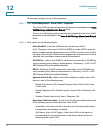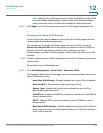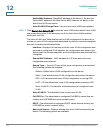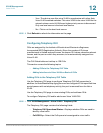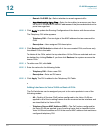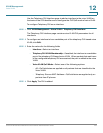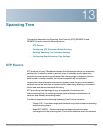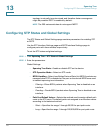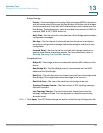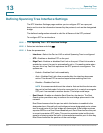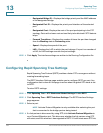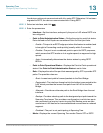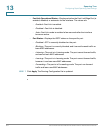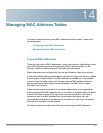
Spanning Tree
Configuring STP Status and Global Settings
195 Cisco Small Business 200 Series Smart Switch Administration Guide
13
topology is naturally tree-structured, and therefore faster convergence
might be possible. RSTP is enabled by default.
NOTE The 200 series switches do not support MSTP.
Configuring STP Status and Global Settings
The STP Status and Global Settings page contains parameters for enabling STP
or RSTP.
Use the STP Interface Settings page and RSTP Interface Settings page to
configure ports with these modes, respectively.
To set the STP status and global settings:
STEP 1 Click Spanning Tree > STP Status & Global Settings.
STEP 2 Enter the parameters.
Global Settings:
• Spanning Tree State—Enable or disable STP on the device.
• STP Operation Mode—Select an STP mode.
• BPDU Handling—Select how Bridge Protocol Data Unit (BPDU) packets are
managed when STP is disabled on the port or the device. BPDUs are used
to transmit spanning tree information.
- Filtering—Filters BPDU packets when Spanning Tree is disabled on an
interface.
- Flooding—Floods BPDU packets when Spanning Tree is disabled on an
interface.
• Path Cost Default Values—Selects the method used to assign default path
costs to the STP ports. The default path cost assigned to an interface varies
according to the selected method.
- Short—Specifies the range 1 through 65,535 for port path costs.
- Long—Specifies the range 1 through 200,000,000 for port path costs.



